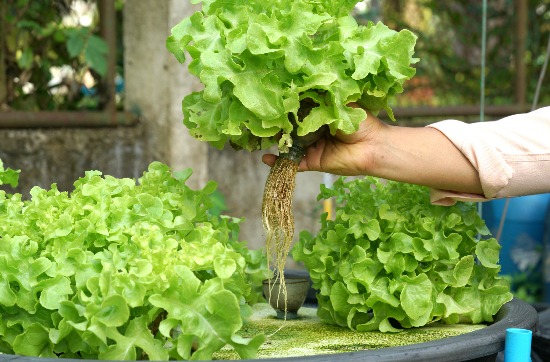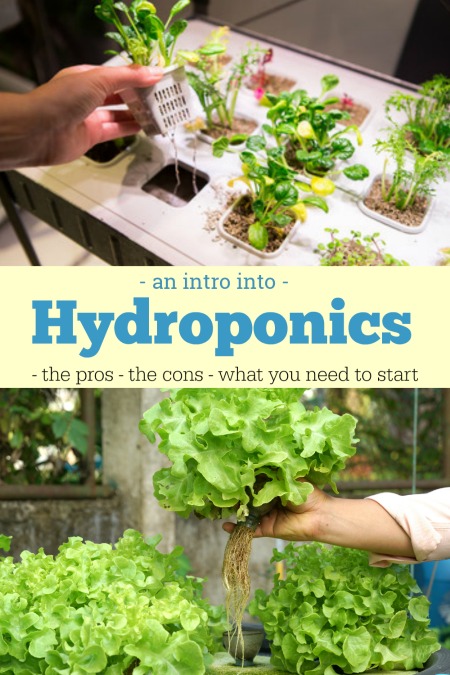Hydroponic gardening refers to the growing of plants without soil, using a water-based nutrient solution. This isn’t exactly a new concept either, with the idea dating back to the 7th century B.C.
Hydroponic growing systems allow plant roots to come into direct contact with nutrients and oxygen, which are both essential to plant growth, without using soil. Instead of soil, some hydroponic systems use different types of growing media, like stone wool, clay pebbles, coco coir, vermiculite or perlite to provide support for a plant’s roots. In other hydroponic systems, like those that incorporate aeroponics, no growing media is required at all. According to Maximum Yield, hydroponic plants get their nutrients delivered directly into the roots through a water-based, nutrient-rich solution. This solution can be applied to the roots using several different methods. Some of these methods include, but are not limited to, the roots being suspended in the nutrient solution, such as the deepwater culture method, or the roots can be misted with the nutrient solution, which is used in aeroponics, a.k.a. fogponics or mistponics.
But as with most things, growing plants hydroponically comes with pros and cons. There is also going to be an investment in the equipment if you decide the pros outweigh the cons, so let’s get into it!
PROS

One of the biggest reasons hydroponics has become so popular lately is because recent studies on hydroponic farming have shown it to have many benefits. Plants grown hydroponically are of exceedingly high quality, occupy less space, and consume fewer resources than traditional growing methods such as farming. Additionally, hydroponic growing methods, in combination with vertical gardening, have aided in expanding the possibilities of urban gardening and indoor gardening.
You could realistically grow an entire garden hydroponically in your own home, and with a large enough financial investment, have fresh produce year-round even in cooler climates!
Not only can crops be grown in every season, but the yield in hydroponic farms is also double the production yield of soil-based farms because the growth cycle is constantly restarting. Hydroponics also use less water, in fact, 1/12th less, than traditional growing methods making it a more sustainable choice.
Another advantage is that hydroponic systems do not always require pesticides at all! Because hydroponic plants are grown in controlled environments, they are not susceptible to soil-borne diseases, pests, or fungi.
CONS

If you don’t live where it’s often sunny, the light source becomes a factor and hydroponic growing can easily become a costly endeavor. Of course, you can purchase lamps to grow plants, but they will cost you some money. If you already have some, however, those can be used.
That said, another con is that the initial setup costs are pretty high in general. Small, home-based hydroponic systems can be built relatively cheaply if you’re on a budget, but it’s still necessary to invest some money into the process.
There’s also a limit to what you can grow effectively. Crops like vining plants, corn, and root vegetables are not suited to compact systems because they are not space-efficient, to begin with.
But perhaps the greatest con with a hydroponics system is that something like a pump failure can kill off your plants within hours depending on the size of your system. They can die quickly because the growing medium can’t store water like soil can, so the plants are dependent on a fresh supply of water. You will also need to monitor the pH levels constantly and it can be a high-maintenance system.
EQUIPMENT NECESSARY TO BEGIN
The deepwater culture method is the easiest way to get into hydroponics. In the Deepwater Culture (DWC) method, also known as the reservoir method, the roots are suspended in a nutrient solution. An aquarium air pump oxygenates the nutrient solution, and this keeps the roots of the plants from drowning. Remember to prevent light from penetrating your system, as this can cause algae to grow which would wreak havoc on your system. This is perfect for beginners just starting out because there are no drip or spray emitters that can clog up. This also makes DWC an excellent choice for organic hydroponics, as hydroponics systems that use organic nutrients are more prone to clogs.
You can buy an entire four plant system on Amazon already put together for you! At around $106 at the time of this writing, this Viagrow VDIY Deep Water Hydroponic 4 Plant System
is a decent way to begin.
The Homend DWC system

For those who prefer a do-it-yourself method, there’s a great tutorial by Home Hydro Systems. You will need:
- Five-gallon bucket with lid (you can make your own lid if you need to)
- Aquarium air pump
- Airline for the pump
- Aquarium air stone (or stones)
- Basket for the plant (you can use a standard small plastic plant pot as well)
- Growing media (to fill the basket or plant pot with)
- Black spray paint (to light proof the bucket)
- White spray paint (to reflect light/heat)
- Pluming Goop or silicone (optional)
Once you’ve gathered all of these supplies, click here to go to the tutorial!
Does anyone use hydroponics at home? If so, let us know what you did, share your DIY tips, or comment with ways to save money for those just beginning!


